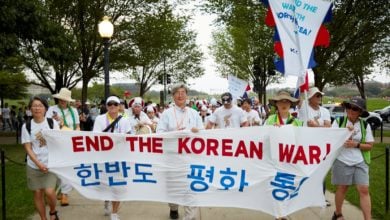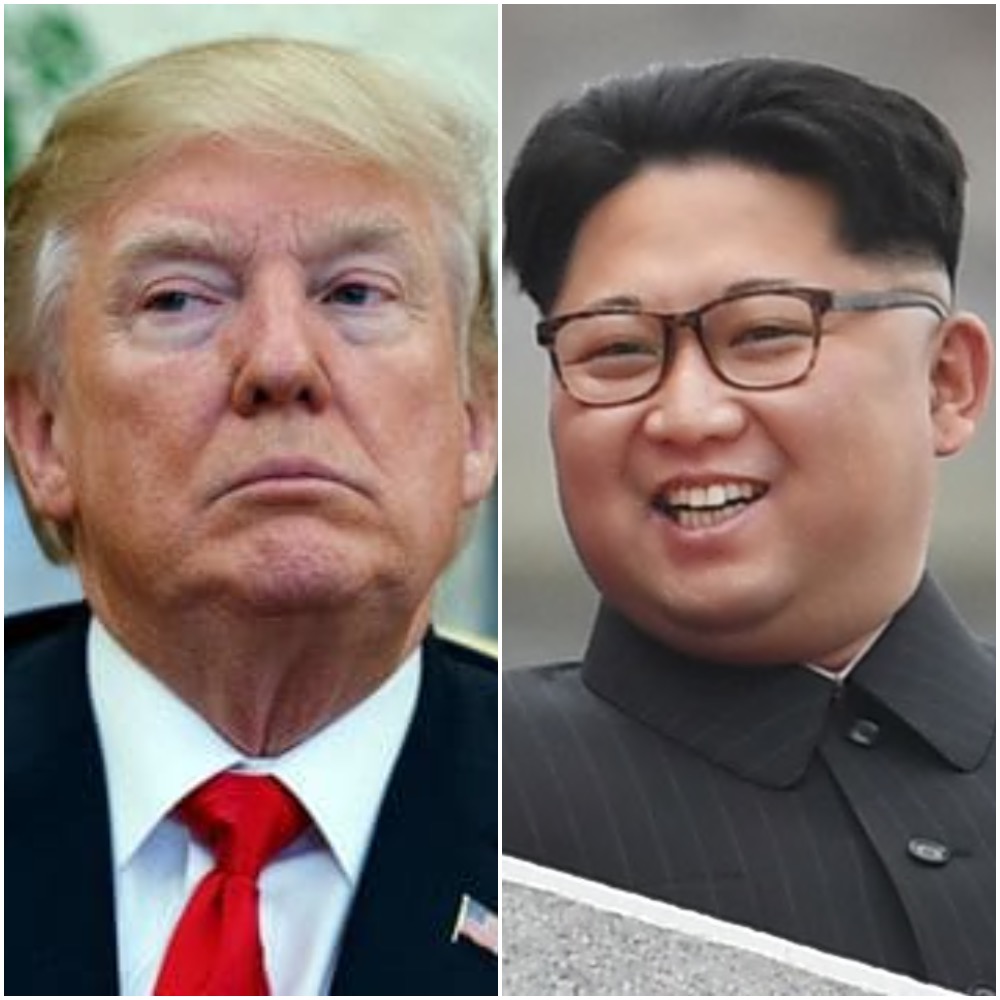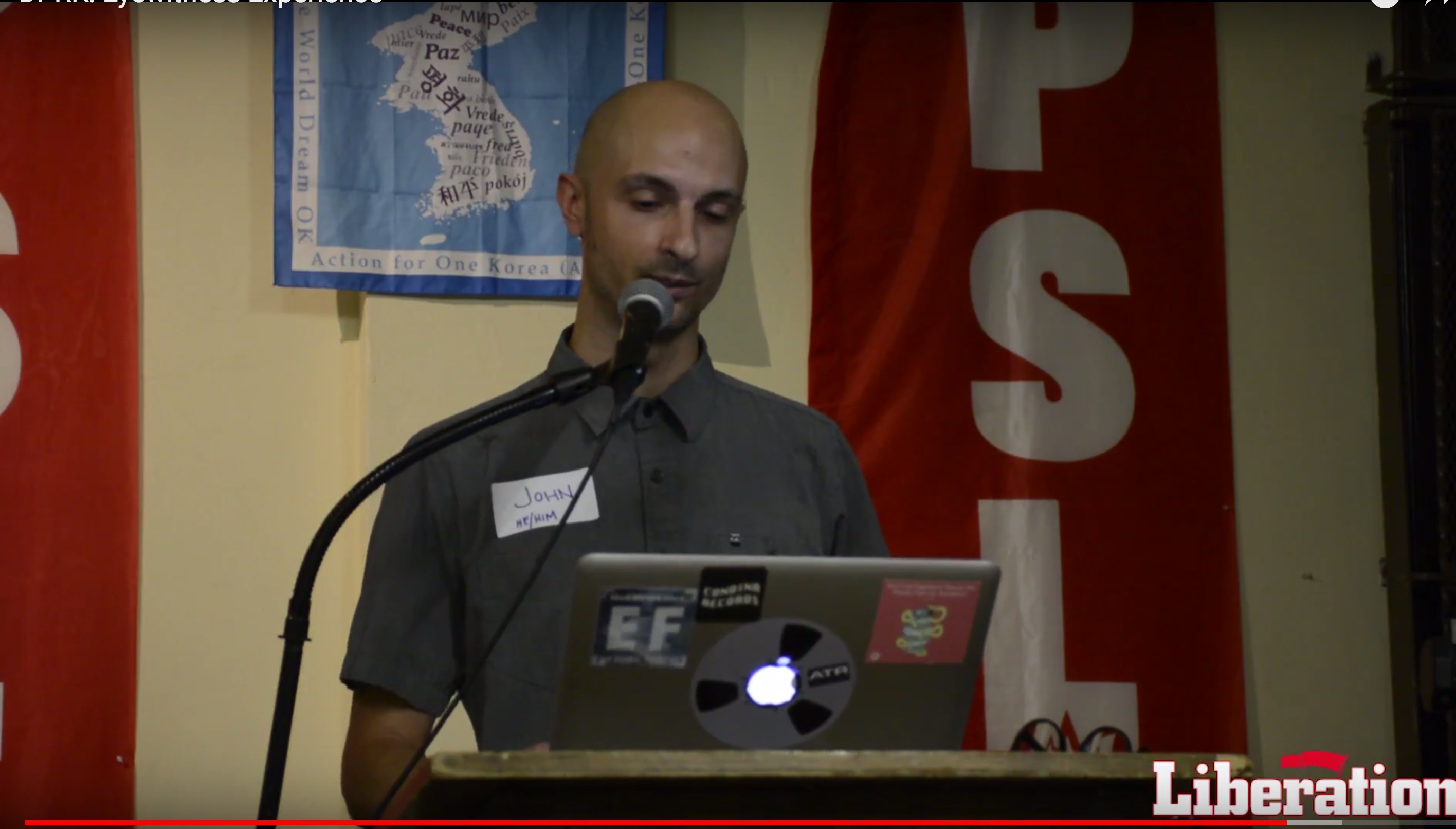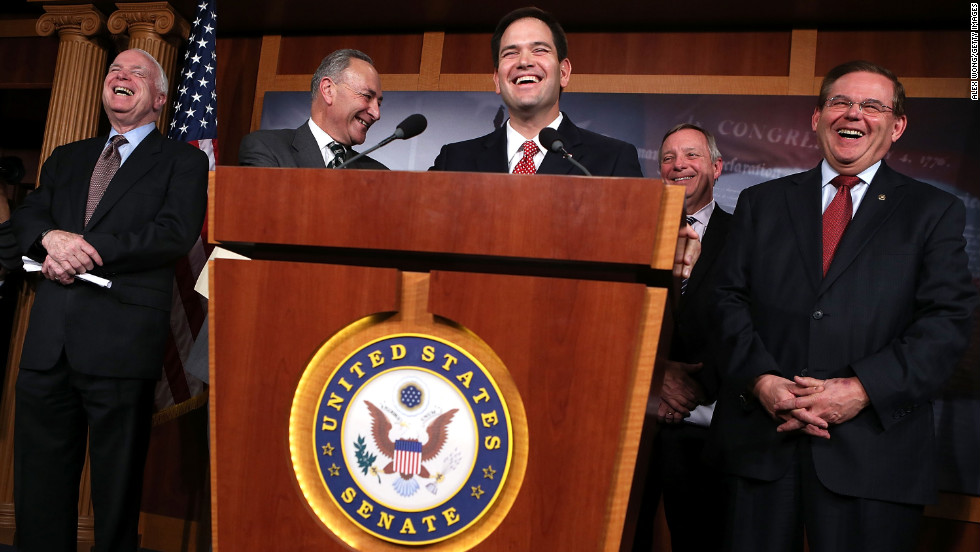On Oct. 17, 1926, Korean students and workers formed the Down-with-Imperialism Union. This organization, led by the future leader of the Democratic People’s Republic of Korea, Kim Il Sung, developed into the wing of the Korean national liberation movement that ultimately succeeded in freeing the northern half of the country from Japanese and U.S. imperialism.
The 20th century was marked by the first socialist revolutions in history. People throughout the oppressed world were rising up against their colonial masters. In many cases, communists provided the leadership of these anti-colonial struggles, basing themselves on the working class and the poorest peasants. In China, Vietnam, Cuba, Korea and several other countries, this gave a profound linkage between the national liberation struggles and the socialist revolution. The Korean national liberation struggle highlights the profound significance of leadership — and especially the role of communists and the working class — in the struggle against colonialism and imperialism.
The Korean people trace their national history back nearly 5,000 years, but modern Korean history has been most shaped by the national liberation struggles beginning in the 1800s. During that period, Korea was a semi-feudal society ruled by a king and based on large landholders ruling over a largely peasant population.
By the end of the 19th century, Japan was the dominant power in the region. All of Asia, especially China and Korea, were increasingly the targets of imperialist intervention. Britain, Germany, France, the United States and Russia all competed against Japanese hegemony for “spheres of influence” in the region.
The two major factors that shaped the Korean national liberation movement were Japan’s imperialist occupation and the class exploitation of Korea’s peasants and emergent working class.
Peasant uprisings
During the 19th century, feudal rule over the Korean peasantry became increasingly unstable. Natural disasters like famines and floods devastated peasants’ living conditions, while the Korean ruling class — represented by the Joseon dynasty and the big landowners — intensified their exploitation. In response, peasants rose up across Korea. From 1812, in the northern province of Kasan, through 1862, in the Chinju uprising, peasants staged armed uprisings against the government and landowners, who retaliated brutally.
These uprisings set the stage for a country-wide peasant uprising in 1894, known as the Tonghak Peasant Revolution. Tonghak (“Eastern thought”) was a pseudo-religious ideology developed in the 1860s by Choe Che-U, a mystic. Choe developed his Tonghak ideology in response to growing Christianity — promoted by Western missionaries — and to Japanese influence in Korea. The Tonghak ideology fused with the sporadic peasant uprisings against heavy taxes and repression.
Tonghak, set to music to be more accessible to illiterate peasants, concentrated on democracy, human rights and social equality. It was explicitly nationalist, rejecting influences from Japan and the West. In 1892, peasant groups united to form the Tonghak Peasant Army. In January 1894, the first battle broke out between the Peasant Army and government forces. The Army routed a Joseon government tyrant, Cho Pyong-gap, and distributed his land to the peasants. The peasant army’s yellow flags bore the slogan, “Sustain the people and provide for the people.”
Battles between the Tonghak Peasant Army and government forces continued throughout the year. Finally, the Korean Joseon dynasty appealed for aid from the Chinese and Japanese governments. In November 1894, the Peasant Army was defeated — largely at the hands of Japanese troops.
Japanese colonialism and resistance
The joint intervention of Japanese and Chinese troops, combined with divisions within the Joseon dynasty between pro-Japan and pro-China wings, set the stage for the Sino-Japanese war of 1894-95 over which power would control Korea. Japan defeated China, and a pro-Japanese regime was imposed on Korea. Japanese control over Korea was solidified after Japan defeated Russia in a war in 1905. Japan then annexed Korea outright in 1910, which opened a period of brutal Japanese colonialism in Korea.
Japan expropriated peasant lands and instituted a forced-labor policy in Korea. Agricultural production was oriented primarily toward export to Japan, causing starvation-level conditions among Koreans. The Korean language was banned, as was any expression of Korean culture or literature.
Opposition to Japanese colonial rule emerged quickly. In 1905, remnants of the Tonghak movement formed a new organization called Chondogyo (“Heavenly Way”). This organization, while still rooted in Korean national religion, began to take a more formally political character.
Armed resistance continued as well. In 1907, the Righteous Army — composed of elements of the 1894 Peasant Army — staged a massive assault on the capital of south Korea against Japanese rule. Ten thousand troops under the command of Yi In-yong massed for the attack, but they were routed by the better-equipped Japanese armed forces. Within two years and after 17,000 casualties, the Righteous Army dispersed into small partisan armies.
By 1919, the Chondogyo religion had become a focal point for independence forces in Korea. Chondogyo leader Son Byong-hi and 32 other prominent religious figures signed a Declaration of Independence, modeled after U.S. President Woodrow Wilson’s “Fourteen Points.” The document began: “We herewith proclaim the independence of Korea and the liberty of the Korean people.”
On March 1, 1919, as many as 2 million people gathered throughout the country to hear the reading of the declaration. The response by the Japanese occupation forces was severe: “Mounted police beheaded young school children. The police burned down churches. The official Japanese count of casualties included 533 killed, 1,403 injured and 12,522 arrested, but the Korean estimates are much higher: over 7,500 killed, about 15,000 injured and 45,000 arrested.” (Lee Wha Rang, “The Samil (March 1) Independence Movement,” 2004)
Two trends emerge
In the wake of the massacre, two political trends emerged within the Korean national liberation movement. An Chang-ho, known as Dosan, led one wing. He argued that the Korean people needed a long period of self-education and enlightenment before they could achieve independence. A prominent figure in the Korean Provisional Government in Shanghai in April 1919, An advocated “key forms of passive resistance open to utilization by the people inside Korea, such as avoiding contact with Japanese officials, boycotting Japanese goods, refusing to use the Japanese flag, and even, possibly unrealistically, refusing to pay taxes.” (A.L. Gardner, “The Korean National Movement and An Chang-ho,” 1979, p. 234)
An’s advocacy of self-improvement and “development of national capital through expanding industries” (An Pyong-ik, “Dosan: The Man and his Thought”) paralleled the political perspective of Gandhi in India. It postponed the tasks of independence until a later period when the masses of Korean people were “ready.” He advocated emulating the United States and England as models for a future, independent Korea.
These ideas dominated the educated and more privileged sectors of Korea’s independence movement. But in the countryside and in the factories, a different current had emerged.
In northern Korea and across the border in Manchuria, armed guerrilla groups still operated on a small scale, directing their efforts against the Japanese occupation. At the same time, influenced by the victorious Russian Revolution, socialist and communist ideas were spreading among Koreans.
These were the factors that influenced Kim Il Sung to found the Down-with-Imperialism Union in 1926. A 14-year-old student who had fled Korea into Manchuria with his family, Kim organized a study circle with his fellow students. They set up the Union as a “fresh political organism of a new type created in the throes of a historic cause by young people of the rising generation who aspired to socialism and communism, for the realization of national liberation and class emancipation with the ideal of anti-imperialism, independence and sovereignty.” (Kim Il Sung, “Reminiscences with the Century,” 1992)
Communist-led Korean guerrilla units fought side by side with Chinese communists, who were also engaged in a struggle against Japanese intervention in northern China. Throughout the 1930s, the communists waged an increasingly organized insurgency against Japanese military and police units. At the same time, peasant organizers began pressing for land reform. Communists set up “Red Peasant Unions” throughout northern Korea, emphasizing reliance on the poor peasantry, setting up peasant cooperatives and creating a “united front from below” to fight the Japanese. (Charles K. Armstrong, “The North Korean Revolution,” 2003) Chondogyo activists also set up peasant organizations throughout the countryside.
World war and liberation
These two trends within the Korean national liberation movement did not compete with each other in isolation. The Japanese invasion of China in 1937 and the subsequent entry of the United States in World War II in 1941 placed the Korean struggle in the context of a global inter-imperialist conflict.
In Manchuria and eastern China, Korean partisans fought against Japanese forces alongside the Chinese Red Army with the support of the Soviet Union. Meanwhile, the Korean Provisional Government was petitioning Japan’s opponents in the war — the United States and Britain — for support and recognition.
After Nazi Germany’s surrender in May 1945, Soviet troops swept through Manchuria and Korea, providing decisive support to the anti-Japanese resistance. Based on an agreement between the United States and the Soviet Union, Korea was to be temporarily divided into two zones at the 38th Parallel. Soviet troops occupied the north. The United States insisted that the defeated Japanese army remain at their posts so as to prevent Korean revolutionaries from taking control of their own country following Japan’s surrender. U.S. troops entered Korea on Sept. 9, 1945, to replace Japan as an occupying force.
Immediately the Korean liberation forces faced a new challenge. Would newly liberated Korea set up an independent government based on the people’s organizations that had struggled against Japanese colonialism? Or would the new Korean government be a vassal of the new U.S. imperialist power in Asia?
The question was posed in practice by the emergence of two different political poles claiming to speak for the Korean people. On Sept. 6, 1945, Korean nationalists of many different political trends formed the Korean People’s Republic. People’s Committees were set up across the country to implement Korean self-rule.
On the other hand, the U.S. military government set itself as the governing power in the territory it occupied in southern Korea. Rightist Korean property owners, many of whom had collaborated with the Japanese occupation, set up the Korean Democratic Party on Sept. 16, 1945. The KDP aligned itself with the U.S. military government against the growing wave of workers — strikes, factory takeovers and land seizures.
The tension between these two poles soon broke out into armed conflict. North of the 38th Parallel, where Soviet troops were stationed, communists worked with other political forces within the People’s Committees to set up genuine self-rule. Kim Il Sung, whose prestige had grown throughout the resistance struggle as an able military leader and mass organizer, emerged as a prominent leader in the north.
But in the U.S.-occupied south, U.S. troops and right-wing KDP forces brutally put down uprisings and strikes. Throughout 1946, U.S. forces crushed rebellions by People’s Committees and unions in Pusan and Taegu.
Unable to influence the development of Korean independence in the north and in desperate need of setting up a puppet government in the south, the U.S. military government initiated a United Nations-supervised election in May 1948 — but only in the southern region it controlled.
The North Korean People’s Committee called for a meeting in April 1948 of all political forces to gather in Pyongyang to condemn the unilateral and divided elections — what they called a “crisis of national division.” The meeting of 545 representatives of 46 political parties — covering the entire spectrum of the Korean national liberation movement — ended with “a declaration of unity against American designs to divide the country and a call to boycott the UN-supervised elections.” (Armstrong, p. 216)
The Unfinished chapter: reunification
Amid fierce repression, the elections were held in south Korea, bringing to power the U.S. puppet Syngman Rhee. (Rhee had served as the Washington representative of the Korean Provisional Government, although he had been expelled as president of the KPG in 1925 for embezzlement.) U.S. troops remained in south Korea to protect the new right-wing government— and they have remained there to this day.
In the north, a new power was established based on the People’s Committees, peasant organizations and unions. Korean communists resisted the partition of Korea into north and south, but when the pro-U.S. bourgeois forces under Syngman Rhee unilaterally created “South Korea,” the communist forces in the north established the Democratic People’s Republic of Korea in September 1948. Responding in the interests of the working classes, the new government embarked on a path of national liberation through socialist construction. Soviet troops withdrew from north Korea in December 1948. U.S. military forces continue to occupy south Korea sixty years later.
The continued division of Korea today — despite the 1950-53 war and decades of struggle in the south — is possible only because of the occupation force of 32,000 U.S. troops in southern Korea. It is a source of continued anguish for millions of Koreans, north and south, who share a common heritage. The struggle for reunification, championed by the Democratic People’s Republic and by millions of students and workers in the south, is the final stage in Korea’s struggle for national liberation.





